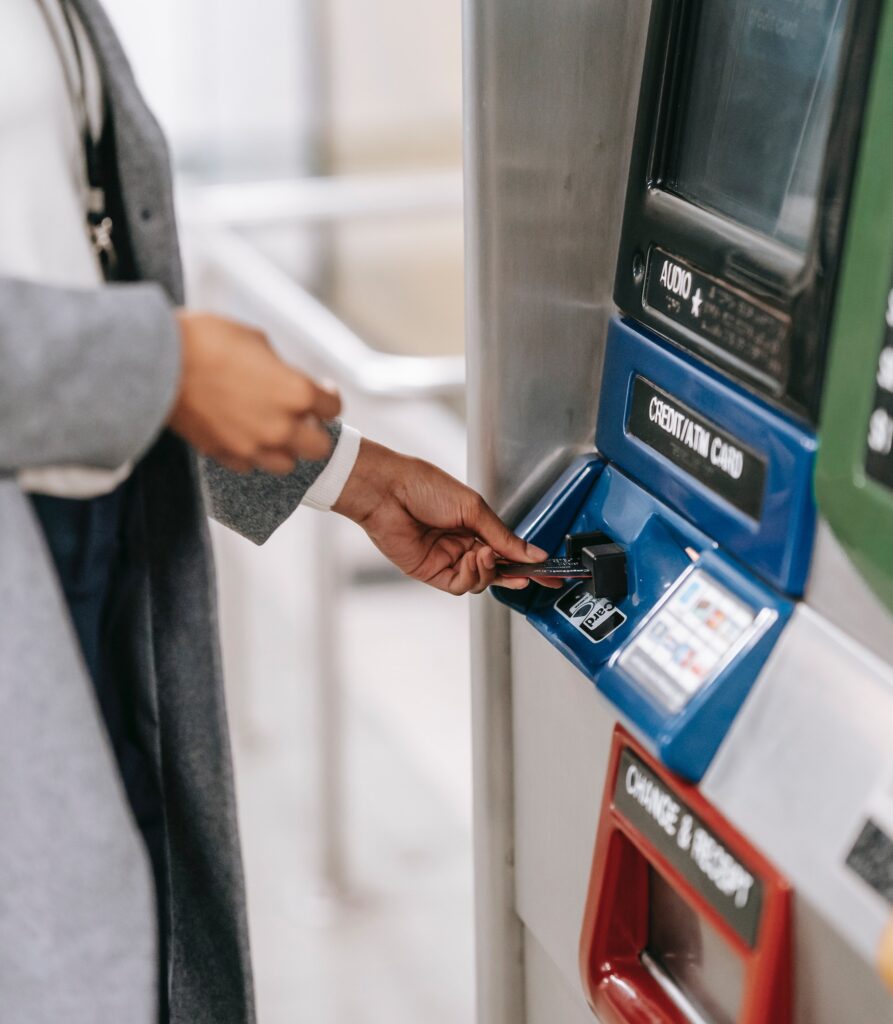Auto sweep facility is an automated system offered by banks that allows customers to transfer excess funds in their savings account into another account with a higher return rate. This feature provides customers with more control over how their money is managed and could help to increase their overall financial security.
List of Contents
What is Auto Sweep Facility?
Autosweep facility is a feature offered by banks that allows customers to automatically transfer excess funds in their savings account to a fixed deposit account or a recurring deposit account. This feature is typically used to help customers earn higher returns on their idle cash by automatically transferring it to a higher-yielding account.
To use the autosweep facility, customers typically need to opt-in to the service and choose the threshold balance at which they want their excess funds to be transferred. For example, a customer may choose to transfer any funds above Rs. 50,000 in their savings account to a fixed deposit account. When the balance in their savings account reaches this threshold, the excess funds will be automatically transferred to the fixed deposit account.
The autosweep facility can be a convenient way for customers to earn higher returns on their idle cash without having to manually transfer funds between accounts. However, it’s important for customers to understand the terms and conditions of the auto sweep facility, including any fees or charges that may apply. Customers should also be aware that the returns on fixed deposits and recurring deposits may be subject to tax, depending on their personal tax situation.

How to add Auto Sweep Facility?
To add the auto sweep facility to your bank account, you will typically need to follow these steps:
- Contact your bank: The first step is to contact your bank and ask about their auto sweep facility. You can do this by visiting a branch in person, calling their customer service number, or sending them a message through their online banking platform.
- Find out the eligibility criteria: Your bank will likely have certain eligibility criteria that you need to meet in order to use the auto sweep facility. For example, you may need to have a certain minimum balance in your savings account or meet certain income requirements.
- Fill out the necessary paperwork: If you are eligible for the auto sweep facility, your bank will provide you with the necessary paperwork to sign up for the service. This may include a form that you need to fill out and return to the bank.
- Choose your threshold balance: Once you have signed up for the auto sweep facility, you will need to choose the threshold balance at which you want your excess funds to be transferred. This is the balance at which your savings account will trigger the transfer of excess funds to the fixed deposit or recurring deposit account.
- Activate the auto sweep facility: Finally, you will need to activate the auto sweep facility by following the instructions provided by your bank. This may involve completing an online form, visiting a branch in person, or providing written confirmation of your request.
It’s important to carefully read and understand the terms and conditions of the auto sweep facility before signing up for the service. This will help you understand any fees or charges that may apply, as well as any tax implications of earning higher returns on your idle cash.Save & SubmitCancel
I’m sorry, but it’s not clear what you are asking about. Could you please provide more context or clarify your question?
Some key terms related to Auto Sweep Facility?
Here are a few key terms that are often associated with the autosweep facility:
- Threshold balance: This is the balance in your savings account at which excess funds will be automatically transferred to a fixed deposit or recurring deposit account.
- Fixed deposit account: This is a type of bank account that allows you to earn a fixed rate of interest on your deposits. The money you deposit in a fixed deposit account is typically locked in for a fixed period of time, and you may not be able to access your funds until the end of the term.
- Recurring deposit account: This is a type of bank account that allows you to earn a fixed rate of interest on your deposits by making regular, fixed payments into the account.
- Interest rate: The interest rate is the percentage of your deposits that you earn in interest. Higher interest rates typically mean that you can earn more on your idle cash, but they may also be subject to tax, depending on your personal tax situation.
- Transfer: In the context of the auto sweep facility, a transfer refers to the automatic movement of excess funds from your savings account to a fixed deposit or recurring deposit account.
- Eligibility criteria: These are the requirements that you need to meet in order to use the auto sweep facility. These criteria may vary from bank to bank, but they may include things like minimum balance requirements or income requirements.
- Fees: Some banks may charge fees for using the auto sweep facility. It’s important to understand what these fees are and how they will be applied before signing up for the service.

An example of auto sweep facility?
Here is an example of how the autosweep facility might work:
Imagine that you have a savings account with a balance of Rs. 50,000. You have also signed up for the auto sweep facility, with a threshold balance of Rs. 50,000. This means that any funds above Rs. 50,000 in your savings account will be automatically transferred to a fixed deposit account or a recurring deposit account.
Let’s say that you receive a salary deposit of Rs. 100,000 into your savings account. Once the deposit is made, your account balance will be Rs. 150,000. Because this balance is above the threshold balance of Rs. 50,000, the autosweep facility will automatically transfer the excess funds (Rs. 100,000) to the fixed deposit or recurring deposit account.
As a result, you will earn a higher rate of interest on your excess funds, which can help you earn more on your idle cash. However, it’s important to keep in mind that the terms and conditions of the auto sweep facility, including any fees or charges that may apply, will vary from bank to bank.

What are the Benefits of Auto Sweep Facility?
There are several benefits to using the autosweep facility:
- Higher returns on idle cash: One of the main benefits of the auto sweep facility is that it allows you to earn higher returns on your idle cash. By automatically transferring excess funds in your savings account to a fixed deposit or recurring deposit account, you can earn a higher rate of interest on your money.
- Convenience: The auto sweep facility is a convenient way to manage your excess funds and earn higher returns without having to manually transfer money between accounts.
- Flexibility: Many banks allow you to choose the threshold balance at which your excess funds will be transferred, which gives you flexibility to decide how much money you want to keep in your savings account and how much you want to transfer to a higher-yielding account.
- Safety: Fixed deposit and recurring deposit accounts are typically considered safer investment options than other types of accounts, as they offer a fixed rate of return and are insured by the government. By using the auto sweep facility, you can ensure that your excess funds are invested in a safe, low-risk account.
It’s important to keep in mind that the terms and conditions of the auto sweep facility, including any fees or charges that may apply, will vary from bank to bank. It’s a good idea to carefully read and understand these terms before signing up for the service.
Features of SBI Auto-Sweep Facility?
The State Bank of India (SBI) offers an auto sweep facility called the “SBI Flexi Deposit Scheme.” Here are some of the features of this service:
- Automatic transfer of excess funds: When the balance in your savings account reaches a certain threshold, excess funds will be automatically transferred to a fixed deposit account or a recurring deposit account, depending on your preference.
- Higher returns: The SBI Flexi Deposit Scheme allows you to earn a higher rate of interest on your excess funds, compared to the interest rate on your savings account.
- Choice of threshold balance: You can choose the threshold balance at which you want your excess funds to be transferred, giving you flexibility to decide how much money you want to keep in your savings account.
- No minimum balance requirement: The SBI Flexi Deposit Scheme does not require you to maintain a minimum balance in your savings account.
- No fees: The SBI Flexi Deposit Scheme does not charge any fees for using the auto sweep facility.
It’s important to note that the terms and conditions of the SBI Flexi Deposit Scheme may change over time, so it’s a good idea to check with the bank for the most up-to-date information.
CONCLUSION
In conclusion, the auto sweepfacility is a feature offered by banks that allows customers to automatically transfer excess funds in their savings account to a fixed deposit or recurring deposit account, in order to earn higher returns on their idle cash. To use the auto sweep facility, customers typically need to opt-in to the service and choose a threshold balance at which they want their excess funds to be transferred. The auto sweep facility can be a convenient way to manage your excess funds and earn higher returns, but it’s important to understand the terms and conditions of the service, including any fees or charges that may apply. Different banks may have different features and terms associated with their auto sweep facility, so it’s a good idea to compare options and choose the one that best meets your needs.
FAQ
Here are answers to some common questions about the auto sweep facility:
How does the autosweep facility work?
The auto sweepfacility allows customers to automatically transfer excess funds in their savings account to a fixed deposit or recurring deposit account when the balance in their savings account reaches a certain threshold. This helps customers earn higher returns on their idle cash without having to manually transfer funds between accounts.
Is the autosweep facility available at all banks?
Not all banks offer the autosweep facility. It’s a good idea to check with your bank to see if they offer this service and what the terms and conditions are.
Can I choose the threshold balance for the auto sweep facility?
Some banks allow customers to choose the threshold balance at which their excess funds will be transferred to a fixed deposit or recurring deposit account. This gives customers flexibility to decide how much money they want to keep in their savings account.
Are there any fees associated with the auto sweep facility?
Some banks may charge fees for using the auto sweep facility. It’s important to carefully read and understand the terms and conditions of the service, including any fees or charges that may apply, before signing up for the service.
Are the returns on fixed deposits and recurring deposits subject to tax?
The returns on fixed deposits and recurring deposits may be subject to tax, depending on your personal tax situation. It’s a good idea to consult with a financial advisor or tax professional to understand how the auto sweep facility may impact your tax obligations.
Follow us on Google News.
